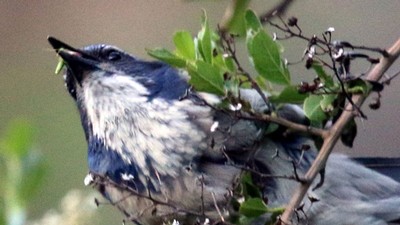Utah State University undergraduate physics student Dan Burton and his mentor, physics professor Mike Taylor, are among a 24-member, international team of scientists who will board two privately owned aircraft at NASA Ames Research Center late Friday, Aug. 31, for the Aurigid Multi-Instrument Aircraft Campaign. The team will fly through the night and early morning to study the elusive remnants of a comet debris stream created some two millennia ago.
“Around 2000 years ago, comet Kiess passed the sun and ejected a cloud of dust,” says Peter Jenniskens, a meteor astronomer at the SETI Institute’s Carl Sagan Center and the mission’s principle investigator. “On Sept. 1, 2007, that trail of dust from Roman times will wander in the Earth’s path again, causing an extremely rare meteor shower.”
Because the meteors will appear to radiate from the Auriga constellation they’re called Aurigids. Jenniskens predicts the shower will be visible by the naked eye from the western United States, especially California, Hawai’i and Alaska, from 5-6 a.m. Mountain time. Astronomers say the whole event will last no longer than one-and-a-half hours and will not be seen again in our lifetimes.
Burton and Taylor’s role in the mission is to shoot video of the Aurigids with USU cameras mounted on each plane. “We’ll try to catch some of the meteors as they burn up in the atmosphere,” says Taylor.
Photographing shooting stars is a skill Taylor has honed on a number of NASA missions including the 2006 Stardust Comet Sample Return Mission. During that venture, he and colleagues successfully captured video of the reentry of NASA’s Stardust capsule, which “acted like a giant meteor,” he says.
Taylor, Burton and fellow team members depart in Gulfstream GV aircraft from California’s Moffet Field. The planes will fly to Wisconsin, turn around and pursue parallel trajectories that follow the Earth’s shadow. At the peak of the shower, the aircraft will be over California.
In addition to cameras, the investigators will use spectrometers and telescopes to measure the velocity, penetration and chemical composition of incoming meteoroids.
Comet Kiess is known as a “long-period” comet, meaning it has an unpredictable orbit lasting more than 200 years. Such comets intrigue scientists because they retain ancient substances and could potentially reveal yet unknown information about the formation of our solar system.
Along with the USU and SETI researchers, team members include scientists from Ames, the U.S. Air Force Academy, Lockheed Martin, University of California Santa Barbara, The Netherlands’ ESA/ESTEC, France’s IMCCE, Germany’s Universitaet Stuttgart and the United Kingdom’s Armagh Observatory.
Related links:
Writer: Mary-Ann Muffoletto [maryann.muffoletto@usu.edu], 435-797-1429






